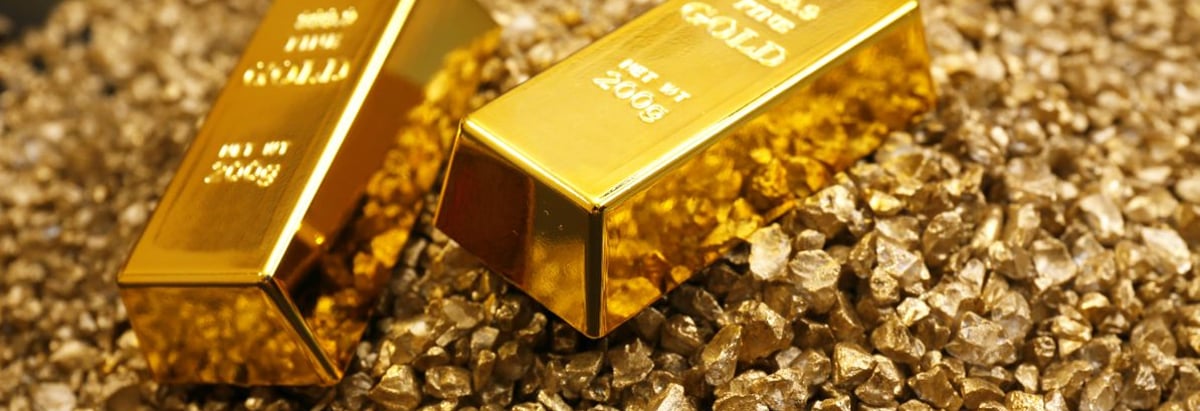- United States
- /
- Metals and Mining
- /
- NYSE:DRD
Public companies who have a significant stake must be disappointed along with institutions after DRDGOLD Limited's (NYSE:DRD) market cap dropped by US$53m

Key Insights
- DRDGOLD's significant public companies ownership suggests that the key decisions are influenced by shareholders from the larger public
- Sibanye Stillwater Limited owns 50% of the company
- Institutional ownership in DRDGOLD is 27%
To get a sense of who is truly in control of DRDGOLD Limited (NYSE:DRD), it is important to understand the ownership structure of the business. With 50% stake, public companies possess the maximum shares in the company. That is, the group stands to benefit the most if the stock rises (or lose the most if there is a downturn).
While institutions who own 27% came under pressure after market cap dropped to US$1.0b last week,public companies took the most losses.
In the chart below, we zoom in on the different ownership groups of DRDGOLD.
Check out our latest analysis for DRDGOLD

What Does The Institutional Ownership Tell Us About DRDGOLD?
Many institutions measure their performance against an index that approximates the local market. So they usually pay more attention to companies that are included in major indices.
We can see that DRDGOLD does have institutional investors; and they hold a good portion of the company's stock. This suggests some credibility amongst professional investors. But we can't rely on that fact alone since institutions make bad investments sometimes, just like everyone does. It is not uncommon to see a big share price drop if two large institutional investors try to sell out of a stock at the same time. So it is worth checking the past earnings trajectory of DRDGOLD, (below). Of course, keep in mind that there are other factors to consider, too.

Hedge funds don't have many shares in DRDGOLD. Looking at our data, we can see that the largest shareholder is Sibanye Stillwater Limited with 50% of shares outstanding. This essentially means that they have extensive influence, if not outright control, over the future of the corporation. In comparison, the second and third largest shareholders hold about 7.7% and 4.0% of the stock.
While it makes sense to study institutional ownership data for a company, it also makes sense to study analyst sentiments to know which way the wind is blowing. There is a little analyst coverage of the stock, but not much. So there is room for it to gain more coverage.
Insider Ownership Of DRDGOLD
The definition of company insiders can be subjective and does vary between jurisdictions. Our data reflects individual insiders, capturing board members at the very least. The company management answer to the board and the latter should represent the interests of shareholders. Notably, sometimes top-level managers are on the board themselves.
Most consider insider ownership a positive because it can indicate the board is well aligned with other shareholders. However, on some occasions too much power is concentrated within this group.
Our most recent data indicates that insiders own less than 1% of DRDGOLD Limited. It's a big company, so even a small proportional interest can create alignment between the board and shareholders. In this case insiders own US$1.3m worth of shares. Arguably, recent buying and selling is just as important to consider. You can click here to see if insiders have been buying or selling.
General Public Ownership
The general public, who are usually individual investors, hold a 23% stake in DRDGOLD. This size of ownership, while considerable, may not be enough to change company policy if the decision is not in sync with other large shareholders.
Public Company Ownership
It appears to us that public companies own 50% of DRDGOLD. This may be a strategic interest and the two companies may have related business interests. It could be that they have de-merged. This holding is probably worth investigating further.
Next Steps:
While it is well worth considering the different groups that own a company, there are other factors that are even more important. Be aware that DRDGOLD is showing 2 warning signs in our investment analysis , and 1 of those is a bit unpleasant...
If you would prefer discover what analysts are predicting in terms of future growth, do not miss this free report on analyst forecasts.
NB: Figures in this article are calculated using data from the last twelve months, which refer to the 12-month period ending on the last date of the month the financial statement is dated. This may not be consistent with full year annual report figures.
New: Manage All Your Stock Portfolios in One Place
We've created the ultimate portfolio companion for stock investors, and it's free.
• Connect an unlimited number of Portfolios and see your total in one currency
• Be alerted to new Warning Signs or Risks via email or mobile
• Track the Fair Value of your stocks
Have feedback on this article? Concerned about the content? Get in touch with us directly. Alternatively, email editorial-team (at) simplywallst.com.
This article by Simply Wall St is general in nature. We provide commentary based on historical data and analyst forecasts only using an unbiased methodology and our articles are not intended to be financial advice. It does not constitute a recommendation to buy or sell any stock, and does not take account of your objectives, or your financial situation. We aim to bring you long-term focused analysis driven by fundamental data. Note that our analysis may not factor in the latest price-sensitive company announcements or qualitative material. Simply Wall St has no position in any stocks mentioned.
About NYSE:DRD
DRDGOLD
A gold mining company, engages in the extraction of gold from the retreatment of surface mine tailings in South Africa.
Excellent balance sheet second-rate dividend payer.


